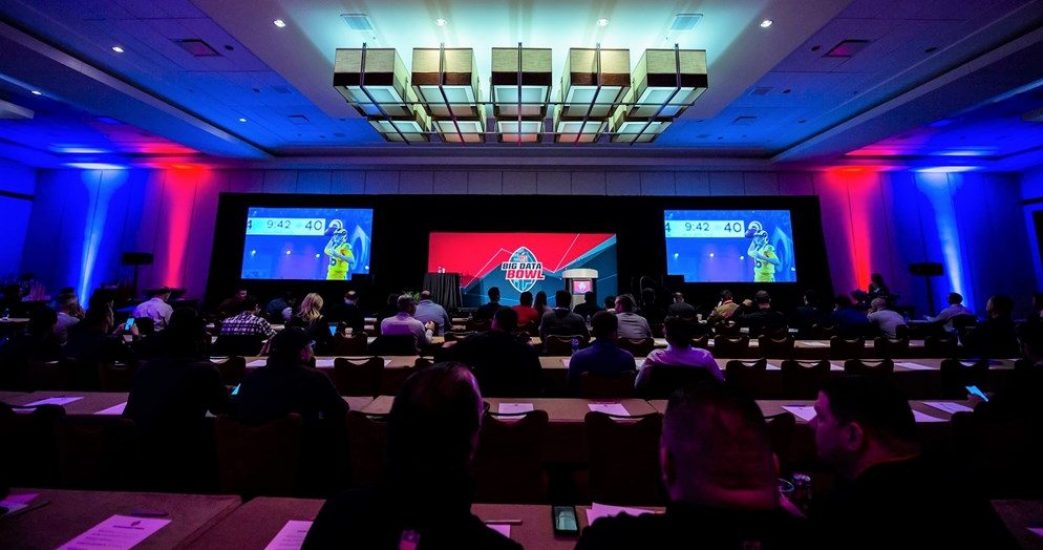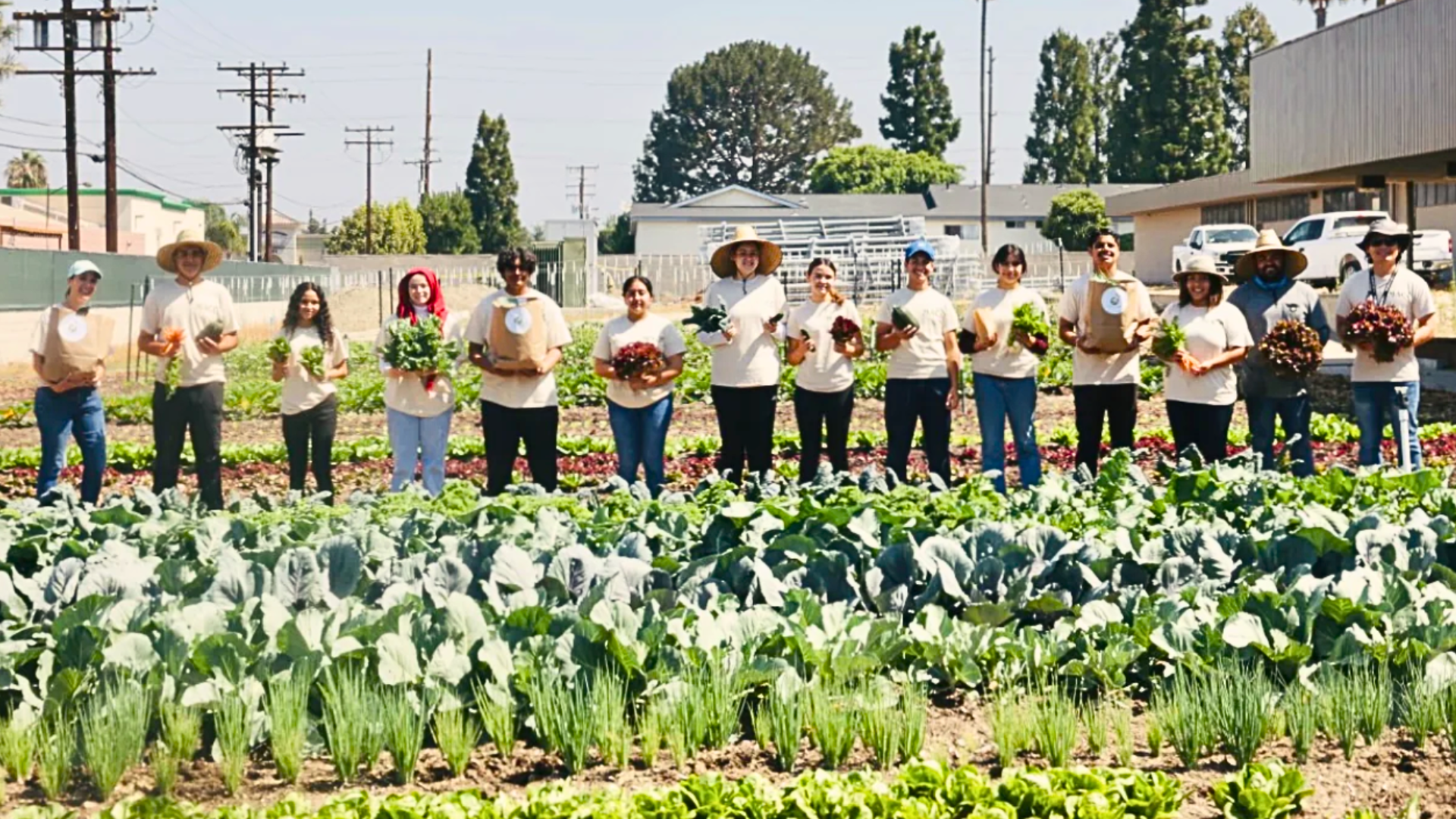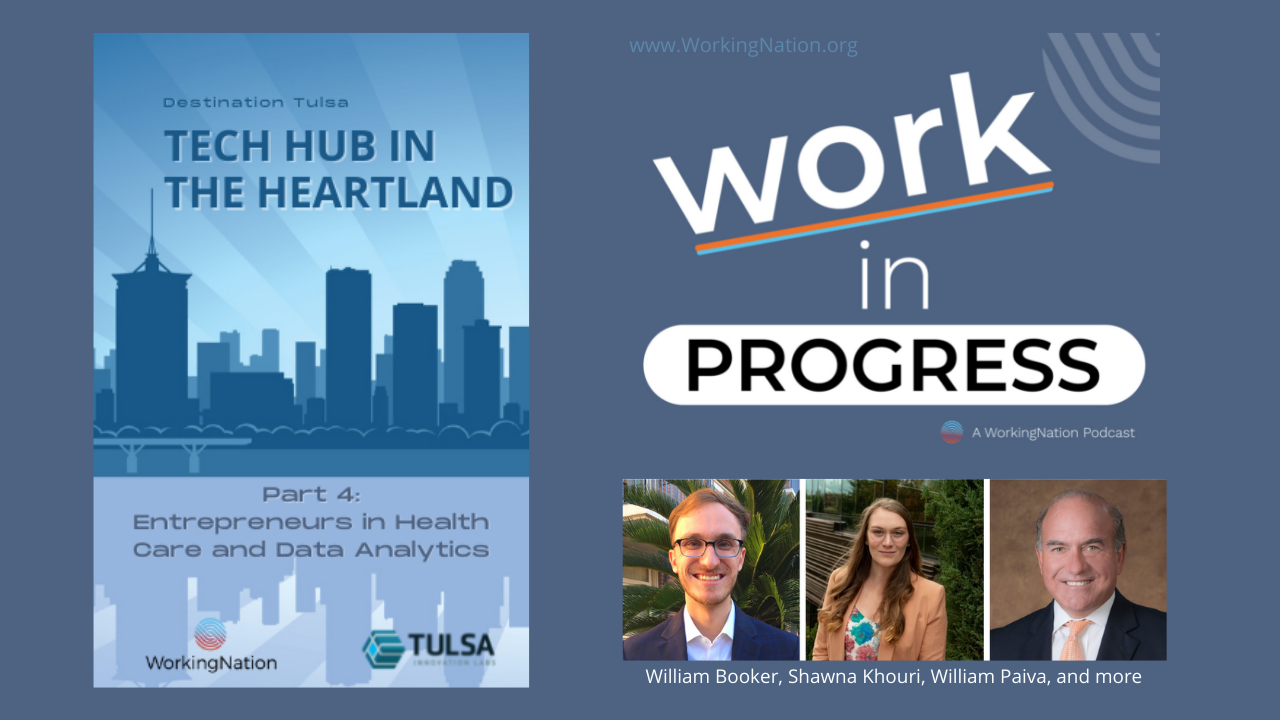The second day of the NFL combine brought together competitors looking to elevate the game, not as athletes, but as data analysts who can help guide decisions in real time.
Like every other industry in America, the NFL is facing a talent shortage as the demand for data analysts grows. To help increase and motivate its future workforce in this area, the league launched its inaugural Big Data Bowl contest last December.
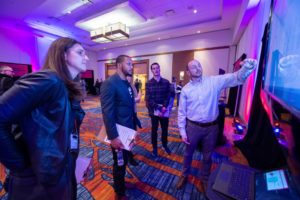
The competition, open to college students and professionals in the analytics field, asked participants to analyze and rethink trends and player performance and innovate the way football is played and coached. It was the first time non-league personnel was given access to Next Gen Stats NFL player-tracking data from entire games.
“The NFL and its clubs’ use of football analytics continues to grow, and focusing the competition on college students and young professionals allows us to hear from the next generation of young minds that will help shape the industry in the years to come,” Damani Leech, the NFL’s senior vice president of Football Strategy and Business Development, said in the league’s release.
On Feb. 27, eight finalists, whittled down from more than 100 submissions, presented their findings to league and team personnel at an event held in Indianapolis before the 2019 NFL Scouting Combine.
The finalists
One of those finalists was a group of students from The Wharton School at the University of Pennsylvania. The news came as a shock to both the students and their Statistics professor, Abraham Wyner, who told them about the contest during his Sports Statistics Research Seminar just before winter break.
“We, myself included, were almost 100 percent convinced they weren’t going to make it to the finals because they had done some nice work, but nothing was really conclusive and things were in a preliminary form,” Wyner told WorkingNation.
Super excited for our team to present at the NFL combine for the #BigDataBowl! Amazing opportunity to show off some great analytics work plus our “bombshell” finding that we didn’t have enough time to include in our submission. @jakef1873 @AndrewCastle510 @adiwyner and Eric Dong pic.twitter.com/BECGBQqth2
— Jack Soslow (@JackSoslow) February 5, 2019
Wyner said he wasn’t expecting anyone to submit at all because of the fact that the deadline was three days after his students were to return to school. He was delighted when he walked into his office on the first day back on campus and saw three of them, Jack Soslow, a senior, and sophomores Andrew Castle and Jake Flancer sitting in the conference room next door working on a submission. (One Engineering student, Eric Dong, who is not in Wyner’s class is also part of the finalist group.)
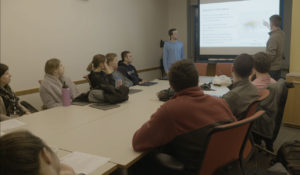
“I worked with them for a couple of days, they presented to the seminar and then they submitted,” he said.
The team submitted their work under the theme “Identifying the Best Receiver-Route Combinations.” It presented “three unique ways to represent pass route data, including time series and shape-based clustering. Merging in-play and game-specific traits, the group suggested that hitch routes are generally an underused strategy for increasing efficiency.”
“Essentially all the information about what players on the field are doing at any given time is calculated over 10 times per second. So our team…was able to extract that information the routes that the receivers were taking and try to figure out which types of routes are more effective, which produced more completion rates and ultimately have a higher expected point valuation,” Wyner explained to our data analytics town hall audience the day before the finals.
WATCH: ‘The Future Is Now: Closing the Data Analytics Skills Gap’ Town Hall
For Soslow, who was Penn’s placekicker for the past four seasons, it was a chance to contribute to the game he loves. And while his team didn’t win, it was an experience that could one day lead to a career in sports data analysis, for himself and others who participated in the contest.
Just finished presenting at the NFL Combine for the #BigDataBowl. Had an awesome time working with @jakef1873 @AndrewCastle510, @adiwyner, and Eric Dong. Congrats to @chuurveg and team for their amazing work on receiver routes and spacing. Here are some final charts: pic.twitter.com/mNEcJh0pCX
— Jack Soslow (@JackSoslow) February 28, 2019
“We are hopeful that the event at the combine in Indianapolis both highlights the work of the prize winners and provides insight to league officials about how player-tracking data can supplement their decision-making processes. Additionally, we hope that the event provides a pathway into the NFL for current and future data scientists,” Michael Lopez, NFL’s director of Data Analytics, told us.
MORE: Click here for full list of finalists
The winners
The group of students who did win the grand prize in the College Entry category hailed from Simon Fraser University. Matthew Reyers, Dani Chu, Lucas Wu, and James Thomson made their mark with their “Routes to Success” submission. Using a technique called model-based clustering, the group found several complementary pass route patterns that could consistently yield positive outcomes, even when accounting for defensive formation and behavior, according to the NFL release. A key stat from their presentation showed that through effective pass route combinations, an offense could control roughly 70 percent of the field.
In the Open Entry category, Nathan Sterken received the grand prize for his presentation “RouteNet: a convolutional neural network for classifying routes.”
According to the NFL, Sterken treated receiver routes as an image recognition problem, using a neural network to categorize each route. Once grouped, these patterns were compared to win probability added (the change in the offensive team’s chance of winning the game before and after the play). It demonstrated how the flat-in-post route, a staple of the Steve Spurrier days at the University of Florida, was the best three-receiver route combination.
Nathan Sterken is the @NFL #BigDataBowl’s open entry grand prize winner for his report “RouteNet: a convolutional neural network for classifying routes” pic.twitter.com/pm8msqOHxC
— NFL Football Operations (@NFLFootballOps) February 28, 2019
Sports technology breaks away
The NFL’s investment in the data and analytics field is an example of how sports technology is “in an era of exponential growth, similar [to] what we’re seeing in technology integration, data and analytics in any business nowadays.” But one hurdle the sports industry has to overcome is finding the niche talent that understands its intricacies. According to International Sports Technology Association Vice President and Executive Director Tanya Porter, sports technologists need to be able to keep up with the latest technologies on the market; talk in the sport’s language; work with coaches, players and executives; and understand the core components of athlete development or sports business needs.
“Gleaming insight from player tracking data takes time, skill, and football-specific knowledge that not everyone has,” Lopez said in opening remarks at the Big Data Bowl event, noting why not everyone who applied to participate (more than 1,000) was chosen (125) to move on to the submissions round.
Professors like Wharton’s Abraham Wyner help fill a niche by teaching statistics and statistical research through sports data both at the college level and even earlier. In addition to teaching classes and above-mentioned seminar at Wharton, Wyner also leads a summer seminar for high school students with a passion for math and sports, The Wharton Moneyball Academy, a program Castle and Flancer both participated in.
SEE ALSO: A career in data science can earn you big bucks
The demand for talent in data and analytics across various industries like sports and how education systems — traditional and non-traditional — are preparing students for the changing job landscape was a topic of discussion at our town hall event with The Wharton Customer Analytics Initiative (WCAI) at The Wharton School. Read more about the solutions covered at our event here.
WorkingNation will also be tackling this topic at an upcoming SxSW EDU session, How Data Analytics is Changing Sports, on March 6. WorkingNation’s Chief Content and Programming Officer Joan Lynch will moderate the discussion with Trent Dilfer, a former Super Bowl-winning NFL quarterback and current head football coach at Lipscomb Academy in Nashville; Brett O’Brien, the senior vice president and general manager for Gatorade; and Caryn Rosoff, vice president of Endeavor Analytics. Click here for more info.

